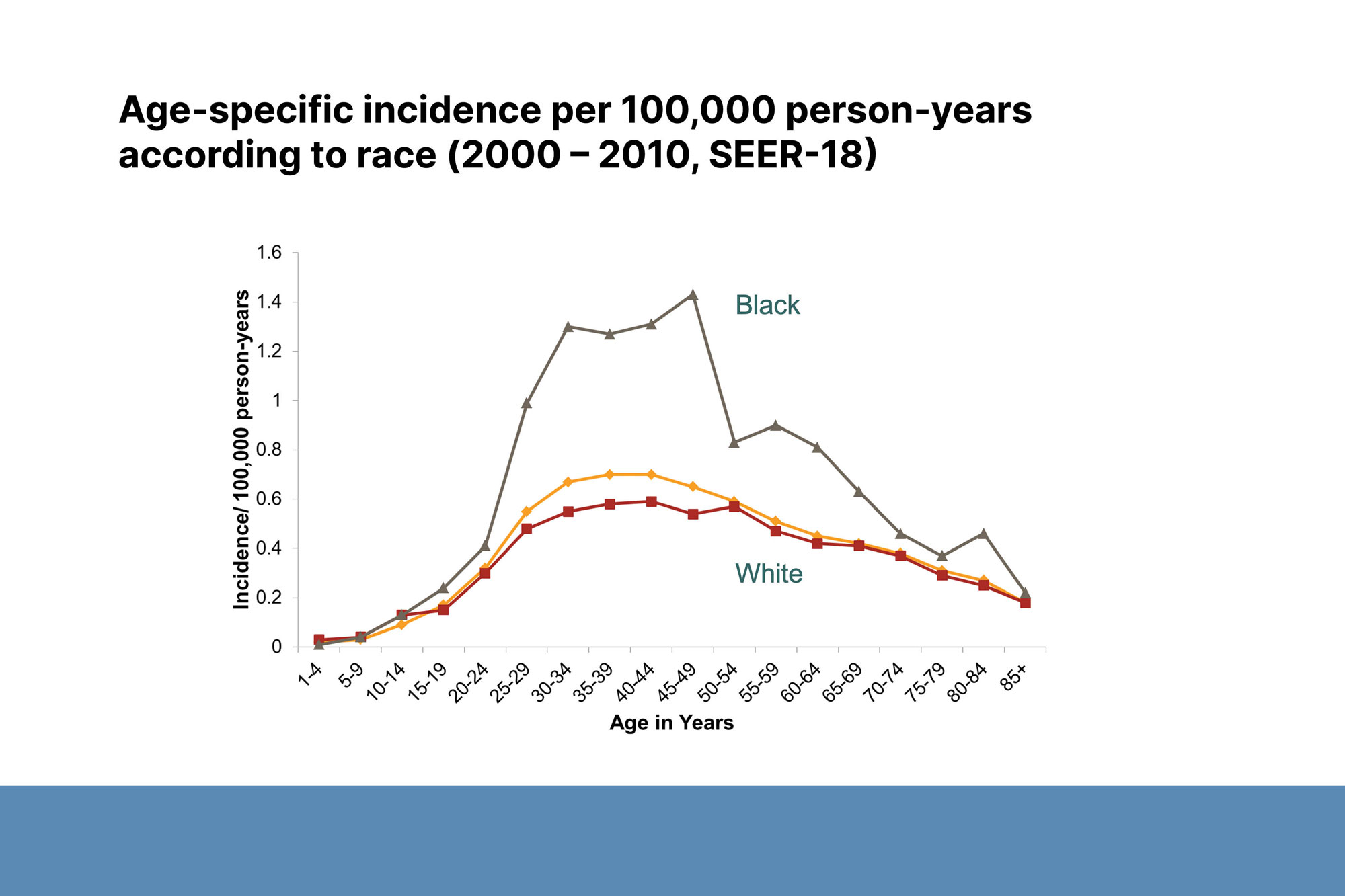Dermatofibrosarcoma
Jeremy S. Bordeaux, MD, MPH, Distinguished Physician, Director, Dermatologic Surgery Director, Multidisciplinary Cutaneous Oncology Program, Fellowship Director, Micrographic Surgery and Dermatologic Oncology, University Hospitals Cleveland Medical Center; Professor of Dermatology, Case Western Reserve University
June 2023
Dr. Bordeaux presented on dermatofibrosarcoma (DFSP), a rare type of skin cancer, affecting 4.2 cases/million annually. For women, DFSP increases the risk of melanoma and breast cancer.
More than any other skin cancer, DFSP has a significant subclinical extension that is both deep and wide. Thus, it is essential to do margin controls on patients with DFSP by performing Mohs surgery. Dr. Bordeaux said, “if you’re not going to do Mohs, then you need to do some sort of pseudo-Mohs to look at the margins because recurrence rates after wide local excision are anywhere from 15% to 50%.” After Mohs surgery, recurrence rates are 1 to 2%.
Until recently, the National Comprehensive Cancer Network (NCCN) recommended treatment for DFSP was wide local excision or Mohs surgery. As a member of the NCCN panel, Dr. Bordeaux worked to change these guidelines for DFSP treatment. As of 2021, the NCCN recommends Mohs as the first-line therapy for DFSP.
Previously, Dr. Bordeaux’s team reported that the cure rate for Mohs was 100% in children with DFSP, and the mean margin was 1.7 centimeters. The cure rate for wide local excision was 89% in children with DFSP, and the mean margin was 2.8 centimeters. However, >50% of these pediatric patients had positive margins and had to undergo additional excision under general anesthesia.
The key takeaway message from Dr. Bordeaux’s presentation was that patients with DFSP should be treated with Mohs. This will help patients avoid undergoing multiple debilitating surgeries due to positive margins.


Learn more about the DF Clinical Symposium.

